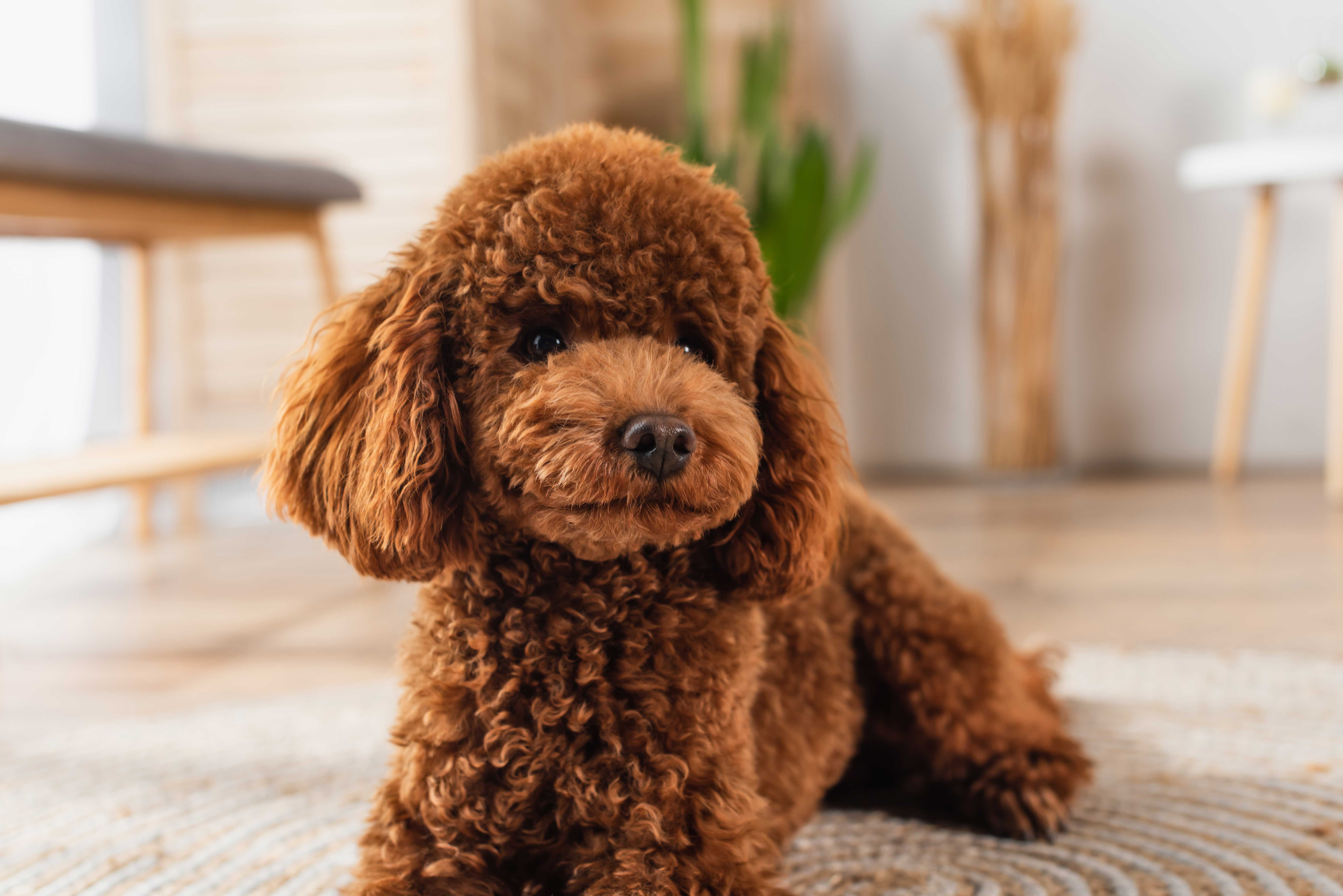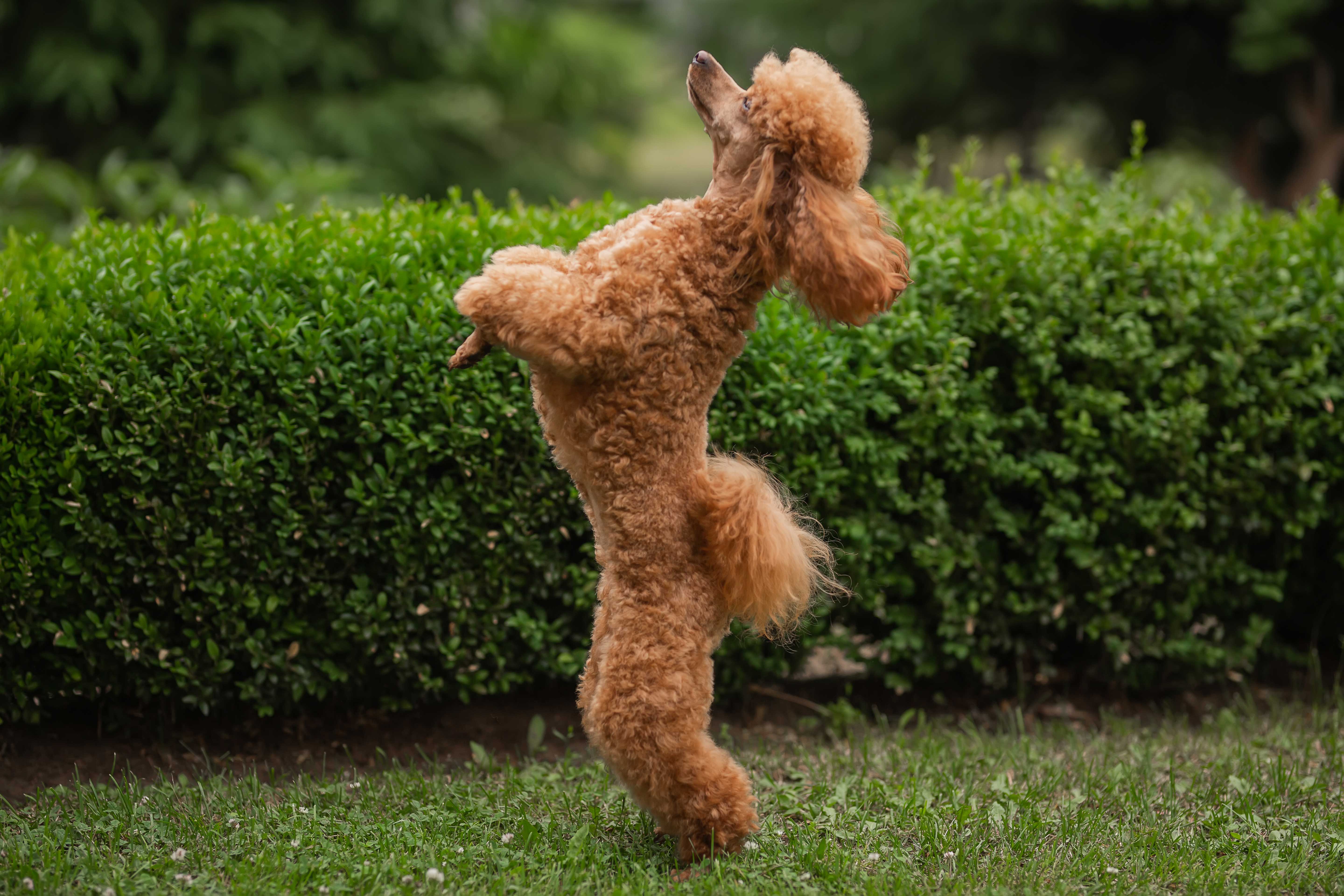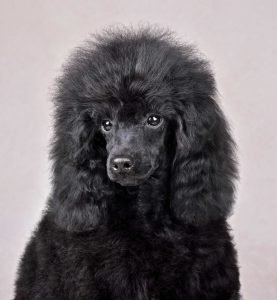Poodles are highly intelligent dogs. They are owner-oriented, require a lot of care, fun and attention, and are generally of a happy temperament. They are elegant, their coats can be trimmed into a myriad of styles, and they can often be extremely boisterous.
Poodles come in three distinct sizes in the UK. The first being a type called Toys. These are the smallest type of poodle and are up to 11 inches at the shoulder. Miniatures are medium-sized poodles and are up to 15 inches at the shoulder. The largest type are called the Standard. These types of poodles can reach as tall as 30 inches or more at the shoulder.
Understanding Poodle Sizes
A key distinction in the world of Poodles lies in the variance of their sizes. Sizes of poodles, categorised into three primary types, offer potential owners an opportunity to choose a pet that best fits their lifestyle and living conditions. Toy Poodles, the most petite of the bunch, measure up to 11 inches at the shoulder, making them perfect for those who favour smaller canine companions or have limited living spaces. Miniature Poodles, a tad larger and standing up to 15 inches at the shoulder, strike a balance between compactness and playfulness, catering to those who desire a medium-sized energetic companion.
Standard Poodles, on the other hand, stand tall and proud, reaching heights of 30 inches or more at the shoulder. These majestic creatures are often sought after by those who have ample space and appreciate the grace and presence that larger breeds bring. Regardless of their size, every Poodle is known for its intelligence, elegance, and a coat that can be fashioned in an array of stylish trims. So, when contemplating adding a Poodle to your family, understanding poodle sizes can be your guiding star, ensuring you find the perfect fit for your home and heart.
A Brief History of the Poodle
Poodles originated in Germany, but were also popular in France where the aristocracy would have their royal crests clipped into the coat. Originally, poodles were hunting dogs and were, are sometimes still are, used by some bird enthusiasts as a water retriever. Poodles enjoy hunting and are easy to train to the gun. In France, the smaller Poodles were used to hunt for Truffles.
The most famous of all Poodles was Boy, a lion-hearted dog that belonged to Prince Rupert of the Rhine in the 17th century and went regularly into battle with him.
Poodles were used as guard dogs by the British Army during the Second World War, but Poodles’ high maintenance coats require a lot of clipping, and were perhaps too much for the British Army to keep on top of which is why they were replaced by German Shepherds.
The Perfect Show Poodle’s Appearance
The Poodle Council UK, which represents the Poodle Clubs in Britain, are the organization which have drawn up The Poodle Breed Standard: a set of guides which is used to ensure that the animals produced by a breeder or breeding facility conform to the specifics of the standardized breed. The guide states that Poodles should have a dense, harsh wool textured coat, which can come in a variety of solid colours, as well as part-colour, and phantom colouring. The head should have a good stop (the area between the muzzle and the eyes), low set ears, almond-shaped fiery eyes, well chiselled foreface, and good dentition with a scissor bite. It also says that the neck should be long, arched and thick set going into the body, and that the tail should be carried high. The council say that these features combined constitute a dog which is elegant, free moving and well-balanced. Of course, Poodles that do not have all of the features that are outlined in the breed guide, are still very beautiful dogs, and no matter how rounded the rib cage or how muscular the hindquarters, a Poodle free running is still a breath-taking sight.
The ‘Hypoallergenic’ Myth and Coat Care
Despite popular belief, the Poodle is not a hypoallergenic breed. In fact, no animal is, as we all shed hair and skin causing allergies to be aggravated. The reason why people with dog allergies may be advised to choose a Poodle is because their hair is wool textured, and does not shed easily. The hair that does shed comes loose from the body but remains within the coat, meaning that it can become heavily matted very quickly. Brushing must be carried out regularly to keep the dog matt free and its skin healthy. Professional grooming and clipping is advised every 4 to 6 weeks to keep the coat clean and tidy and the dog in a healthy condition.
If you are considering getting a Poodle because you have allergies, be aware that although they moult far less than other dogs, they can still aggravate your allergies. Ask a reputable breeder or Poodle Club if you can meet with a Poodle to see if you react adversely to them.
Crossbreeds: Remember, crossbreeding Poodles with other breeds does not make the resulting crossbreed hypoallergenic.
Feeding and Caring for your Poodle
Poodles require two meals of good quality food per day. Poodles require two meals of good quality food per day. A Standard Poodle should never be exercised for at least one hour before eating, two hours if the exercise has been heavy. Exercising before eating can cause digestive tortion, commonly known as Bloat, which can be fatal.
All Poodles require exercise. Mental stimulation is also necessary or they will find their own form of entertainment which usually results in unwanted behaviour. A yappy Poodle is an under-stimulated Poodle. They are not a dog that can be left alone for long periods of time.
Common Health Problems in Poodles
Indiscriminate breeding of Poodles means that the temperament and health can vary widely. We advise that any Poodle buyer goes to a reputable breeder who health tests. Things to look out for include:
- PRA-Prcd – a degenerative eye disease which leads to early blindness
- Luxating Patella – a knee problem common in smaller breeds
- Hip Dyslplasia – an abnormal formation of the hip socket. This is rarely tested for in the UK in smaller poodles
- Legg Perthes Disease – this is where dogs experience a loss of blood to the femur bone. It is a common disease and can be expensive to correct
The Standard Poodle should be hip scored for Hip Dysplasia, tested for Hereditary Cateracts and tested for Sebacious Adenitis. Ask the breeder about the history of the parents and grandparents for information on Addisons or Epilepsy.
When buying your puppy, see the mother with her puppies and ask about the sire, her health and temperament. The Mother should have an outgoing personality and be happy to be stroked and pleased to see you.
When considering a Poodle as your new companion, please also consider a rescue dog.
Poodle Network UK are a registered charity, and rehome around 100 Poodles a year. One of these dogs could be your perfect companion!




